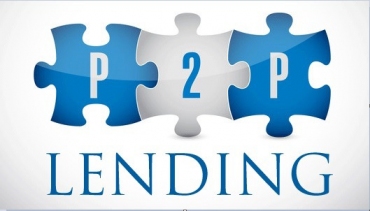Peer-to-peer lending, commonly referred to as P2P lending is a relatively recent development by which borrowers and lenders are matched on an online platform. Unlike conventional lending, there is no physical intermediation, which drives down the costs. Loan amounts typically range from $1,000 to $50,000 though some platforms may process higher amounts for businesses. Lenders charge interest while the platform charges origination fees from borrowers and deducts nominal fees from the repayments. P2P lending has grown very fast due to the numerous advantages that both borrowers and lenders get over conventional lending. A quick look at why this mode of finance is so popular:

Why Borrowers Like P2P Lending
Easy process of application: Unlike traditional banking and other forms of institutional finance that involves a lot of paperwork and bureaucratic processes for the applications to be evaluated and approved, applying to P2P loans is as simple as it gets. You merely register yourself on an online platform and make an application from the comfort of your home or workplace anywhere in the world. Normally, your loan request will be processed in a matter of minutes.
Speed of loan disbursal: Depending on your loan amount and your risk profile, disbursal of the loan usually is made in one to three weeks. You can expect loans of a small ticket size; say under $5,000 to be advanced in less than a week by a reputed company like libertylending.com.
Reasonable rates of interest: The rates of interest are quite reasonable just like that charged by the banks and not by the private personal loan companies that charge fairly steep interest rates. The interest rate is also influenced by the loan tenor requested by the borrower but they move in a relatively small range.
Why Lenders Prefer the P2P Route
Good mode for diversifying investment risk: P2P lending has emerged as a very attractive method of investing for cash surplus investors. The typical loan amounts are smaller as the borrowers are individuals requiring cash for various purposes and not businesses that normally require loans that are sizeable. By advancing several small-ticket loans to different individuals lenders are able to control their risk exposure better and this gives them added safety.
Relatively high returns on investments: In recent times, P2P returns have been around 10%, which is really good because of the risk minimization due to the retail nature of the advances to pre-qualified and FICO-verified borrowers.
Ability to choose borrowers: Typically, P2P platforms classify borrowers in their network according to the size of the loans applied for and their risk ratings. Depending on these factors and the loan term, the algorithm of the platform decides the interest rate. If an investor is interested in a particular borrower, he can fund it otherwise he can wait for a suitable opportunity.
Conclusion
Peer-to-peer lending has picked up speed in recent times because of the inherent efficiencies built into the business model. Both investors and borrowers like it, though for different reasons but what are common are the complete transparency, processing efficiency, and speed of response.

